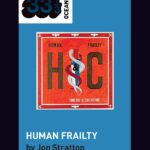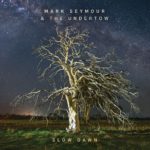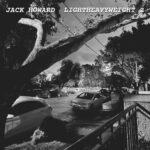Songlines of a Nation
Part of the great essay from Chris Johnston to be included with the Horn of Plenty box set.
Author: Chris Johnston, The Age.
Date: 1 November 2008
Original URL: http://www.theage.com.au/news/entertainment/music/songlines-of-a-nation/2008/10/30/1224956234443.html?page=fullpage#contentSwap2
Seminal band Hunters and Collectors was inspired by the rhythm of the road, writes Chris Johnston.
The best place to start is on the road. It’s a code, meaning something other than what it is: “… trucks and beers and memories…”
Begin with… an empty map of Australia. Pin it up on the back of a door. Then begin tracing the lines of your journeys onto it. Everything you know about life is there. Speed, violence, love, longing, nationhood. They’re songlines. Faultlines. Then eventually there’s no more map, nowhere else to go. At which point you know you have arrived.
The hard road is made of rock. There’s the sound of an engine now, a rumble big enough to break things down. Truck drivers out here on the edge live in hope and fear. These are the men who wear singlets and love their lonely children, hard men in shorts smelling flammable and dangerous. They hold secrets about where they’ve been and where they might one day go in their giant semi-trailer road trains which can cure but can also kill in the blink of a sunstroked eye.
Cry for your mother, cry for your father and drive on. Sing your tough songs as clouds gather blue. Speed towards the pinpoint horizon.
There’s road kill around, dead things. Wrecks. Gunshots in yellow signs. Sweat, roos and laughter under burning sun. Adelaide is 828 kilometres from the West Gate. That’s Australia out your window.
Hunters and Collectors fetishised the road. It held arcane codes for them, but it also held firm logic – it took them to the people who wanted to hear them play.
They were a rock’n’roll band from Melbourne between 1981 and 1998 who did nine studio albums, three live records and three EPs. The band’s life spanned Bob Hawke, the new one-dollar coin, Crocodile Dundee, Keating and Kennett, Maboand Wik and the beginnings of John Howard. The country prospered, recessed and then matured. It was also an era of great Australian music: Midnight Oil, the Angels, X, INXS and Paul Kelly. Mental as Anything. The Hoodoo Gurus, who formed in the same year.
But Hunters and Collectors had something else, right? Something extra. Some aspect or other. Hindsight is only now beginning to show us a few things about why they were perhaps the most powerfully Australian band of all, the Hunnas, expressing a genuine Australian sensibility and set of ideals.
Mostly, probably, it was to do with their utilitarian ways. Sometimes you got the sense that their instruments were actually tools and they had come to fix or build. The music was prone to fits of violence yet could also be impossibly precise. Vast emotions could be projected. But you got the distinct impression none would ever be wasted.
The shows were intense and definite. At their peak the band could fill every molecule of air in any venue in the country with a noise that was louder and clearer than anyone else. They were an orchestra: simple, strong and powerful yet suspicious of undue ceremony or fanfare. These are very Australian attributes. The trumpeter from the famous brass section even played The Last Post.
But the biggest link they had with this immense, merciless country was the road around it. Discipline and logistics were important, so the road was untroubling. A heightened Australian-ness emerged through their explorations – physical and mental – of the paths they travelled. It was a deep well of subject matter as well as a kind of talisman.
The trucks, which took their gear around, were integral to the way their minds worked and how their songs sounded because trucks are democratic and infallible. The band’s art came to be defined by the size of that truck. A three-tonne show, an eight-tonne band, a 13-tonne tour. These were their charts.
They exerted control over Australia by having it covered. The rhythm of the road settled them. There’s a school of thought now, from the inside, that they didn’t make it huge overseas because the road felt different. It unsettled them. They had adapted perfectly instead to Australian conditions: the tarmac and line, the thirst and furnace of the pubs, the “… trucks and beers and memories”.
The best place to start, the best place to end: The Road. For years Hunters and Collectors would start their shows with the sound of it, the chatter of wheel and steel. They had a recording of a monster V-16 engine roaring into life and they’d play it at high volume as the house lights were killed.
It was a primal sound, pistons of violence breathing fuel like a beast coming to. It was so real it was practically documentary and in many ways it heralded the core meaning of the band. Can you imagine it? Everymen opening their killer live shows to adoring crowds who knew all the words with an amplified V-16. Just to get things going. To focus the punters.
The Road. The codes.
In 1983 Hunters and Collectors went to autobahned Germany – a place where the spectre of the road looms as large as it does in Australia – to record their third album, The Jaws of Life. They were using a studio once used by the great Krautrock band Can, who had made a song called Hunters and Collectors, but that’s another story. What were really important here were two things: a towtruck and an Australian murderer named Douglas Crabbe.
The V-16 recording that would become so important – a constant signifier of the band’s ambitious intent and also a direct point of contact between band and audience – came from that German towtruck after the band recorded the sound of it firing into life. It seemed to fit with the kinds of things they were thinking about at the time. A song called Towtruck, originally on the Payload EP, was later re-released with a new version of The Jaws of Life: “… drove this organ round the big country… the distortion was incredible…”
Then news of Crabbe reached them via a newspaper clipping from home: a killer truck, a weapon of mass destruction, a potent symbol of what can go so utterly wrong in the psychogeography of Australia. The story of Douglas John Edwin Crabbe – and the towtruck engine – became 42 Wheels, the opening song from Jaws.
Crabbe was 36 at the time, in ’83, an outback man. His machine was a 25-ton Mack truck. One hot August night that year he was at a remote pub at Yulara, up in the Territory. He was pissed, and he was going the grope, and then he was refused service. He had priors for assault and fighting with police – and had been driving trucks through the nothingness since he was 14 so had in a sense been driven mad by all that he had seen from the cabin – but this time something snapped.
He got up on the bar and started ranting and raving. Then he went and got his enormous truck, unhitched one of the two trailers as if to somehow lessen the carnage he was about to impart, and drove it at full speed from 500metres away into the pub, destroying the building with force, which was likened to an “explosion”, killing five and seriously injuring 16.
It was just after 1am, the dead of night. They found him later as the sun rose out in the desert, among the saltbush and the sun, on the red dirt, running from the road and the grim meaning of it all. Crabbe was charged with murder and is in prison until 2013.
From that moment certain things were clear.
Hunters and Collectors would be heavy and big and serious.
They would deal not only in songs and shows and such but also detailed, evocative expositions into aspects of Australian culture that went right to the heart of things. Things such as speed and violence, scale and power, and love and longing. They would raise issues of nationhood and ask what all those “Australian” things meant.
And they would leave a songline as a memento. A clue to the code. “All trucks and beers and memories,” the songline said. “Spread out on the road.”
This is an edited extract from an essay commissioned by Hunters and Collectors for its 14-CD/two-DVD box set, Horn of Plenty, out on November 22 through Liberation.
N/A.





